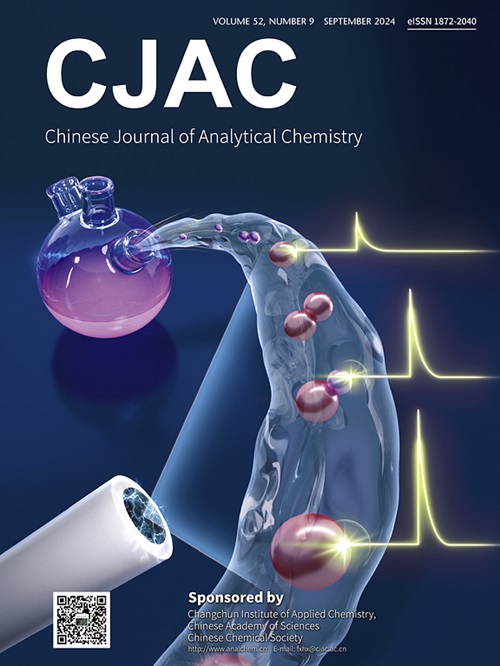Analysis of metal electrochemical corrosion behavior and velocity under AC stray current
IF 1.3
4区 化学
Q4 CHEMISTRY, ANALYTICAL
引用次数: 0
Abstract
Stray currents can cause electrochemical corrosion of metals, accelerate material aging, and even pose safety hazards. By studying corrosion behavior and speed, the degree of damage caused by stray currents to metals can be evaluated, protective measures (cathodic protection, insulation design, etc.) can be optimized, the service life of metal structures can be extended, maintenance costs can be reduced, and the safe and stable operation of power systems and infrastructure can be ensured. Therefore, research on the electrochemical corrosion behavior and velocity analysis method of metals under AC stray current. This article mainly explores the influence of different alternating current (AC) stray current densities on the electrochemical corrosion behavior of 316L stainless steel. The experiment used Yingtan soil simulation solution, and analyzed the changes in indicators through electrochemical testing, corrosion morphology observation, and corrosion rate calculation. The results indicate that the corrosion rate of 316L stainless steel in soil simulation solution shows a trend of first decreasing and then increasing when disturbed by AC stray current density. In the initial stage, the synergistic effect of high concentrations of Cl– and O2 leads to a faster corrosion rate. Over time, corrosion products increase and form a film layer, which hinders harmful ion erosion and slows down the corrosion rate. However, after prolonged immersion, the corrosion product film may crack, crevice, or even peel off, causing crevice corrosion and galvanic corrosion, accelerating the corrosion process. AC stray current forms a "tip discharge" through the defect, further exacerbating corrosion. With the increase of AC interference current density, the corrosion rate of 316L stainless steel significantly increases, and the main corrosion form changes from uniform corrosion to localized corrosion. When the stray current density is greater than or equal to 200 A/m2, the corrosion degree of 316L stainless steel under the peeling coating reaches severe corrosion. This study is of great significance for understanding the impact of AC stray currents on metal corrosion and developing effective protective measures.
交流杂散电流作用下金属的电化学腐蚀行为及腐蚀速度分析
杂散电流会引起金属的电化学腐蚀,加速材料老化,甚至造成安全隐患。通过研究腐蚀行为和腐蚀速度,可以评估杂散电流对金属的破坏程度,优化保护措施(阴极保护、绝缘设计等),延长金属结构的使用寿命,降低维护成本,保证电力系统和基础设施的安全稳定运行。因此,研究了金属在交流杂散电流作用下的电化学腐蚀行为及速度分析方法。本文主要研究了不同交流杂散电流密度对316L不锈钢电化学腐蚀行为的影响。实验采用鹰潭土壤模拟溶液,通过电化学测试、腐蚀形态观察、腐蚀速率计算等分析指标变化。结果表明:受交流杂散电流密度干扰时,316L不锈钢在土壤模拟溶液中的腐蚀速率呈现先减小后增大的趋势;在初始阶段,高浓度Cl -和O2的协同作用导致腐蚀速率加快。随着时间的推移,腐蚀产物增加并形成膜层,阻止有害离子的侵蚀,减缓腐蚀速度。但在长时间浸泡后,腐蚀产品膜可能出现裂纹、裂缝,甚至剥落,引起缝隙腐蚀和电偶腐蚀,加速腐蚀过程。交流杂散电流通过缺陷形成“尖端放电”,进一步加剧腐蚀。随着交流干扰电流密度的增大,316L不锈钢的腐蚀速率显著增大,主要腐蚀形式由均匀腐蚀转变为局部腐蚀。杂散电流密度大于等于200 A/m2时,剥落涂层下的316L不锈钢腐蚀程度达到严重腐蚀。该研究对了解交流杂散电流对金属腐蚀的影响,制定有效的防护措施具有重要意义。
本文章由计算机程序翻译,如有差异,请以英文原文为准。
求助全文
约1分钟内获得全文
求助全文
来源期刊
CiteScore
3.60
自引率
25.00%
发文量
17223
审稿时长
35 days
期刊介绍:
Chinese Journal of Analytical Chemistry(CJAC) is an academic journal of analytical chemistry established in 1972 and sponsored by the Chinese Chemical Society and Changchun Institute of Applied Chemistry, Chinese Academy of Sciences. Its objectives are to report the original scientific research achievements and review the recent development of analytical chemistry in all areas. The journal sets up 5 columns including Research Papers, Research Notes, Experimental Technique and Instrument, Review and Progress and Summary Accounts. The journal published monthly in Chinese language. A detailed abstract, keywords and the titles of figures and tables are provided in English, except column of Summary Accounts. Prof. Wang Erkang, an outstanding analytical chemist, academician of Chinese Academy of Sciences & Third World Academy of Sciences, holds the post of the Editor-in-chief.

 求助内容:
求助内容: 应助结果提醒方式:
应助结果提醒方式:


